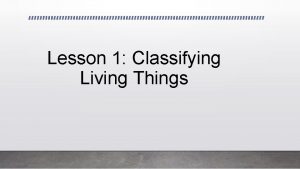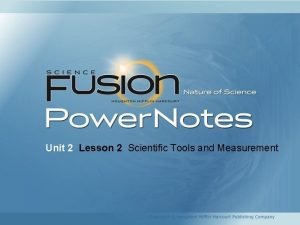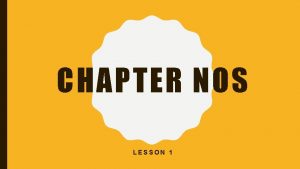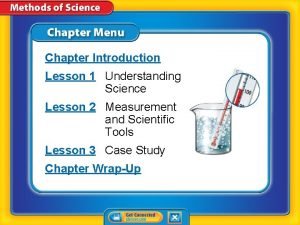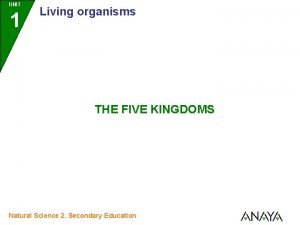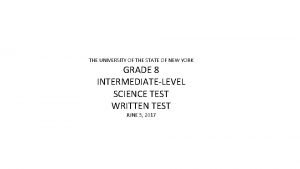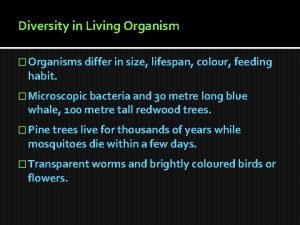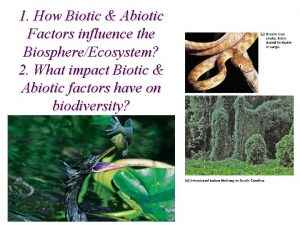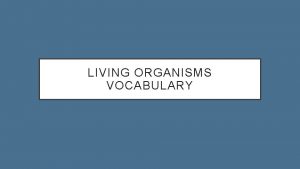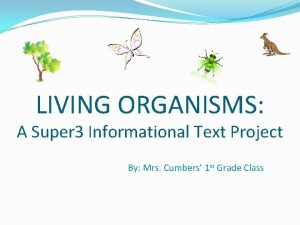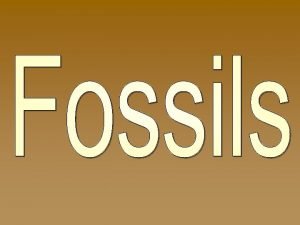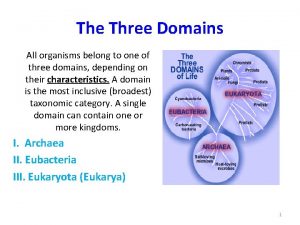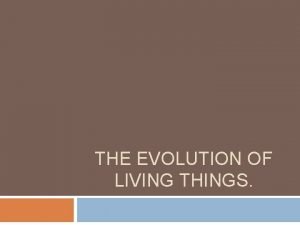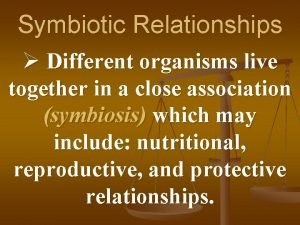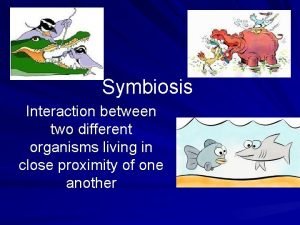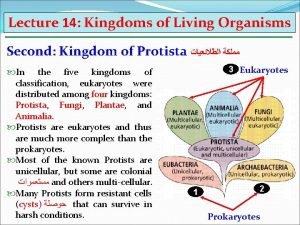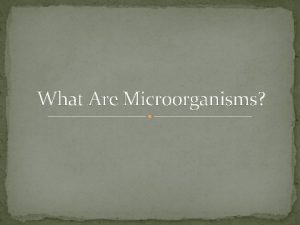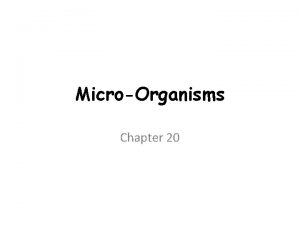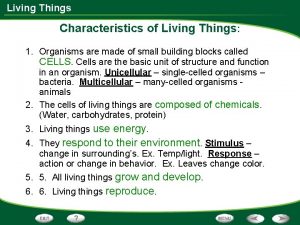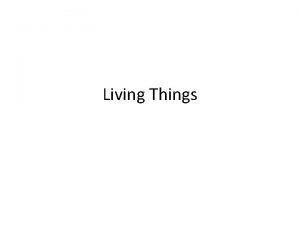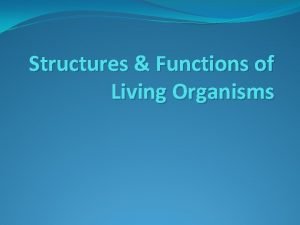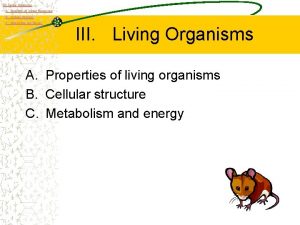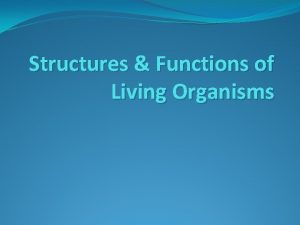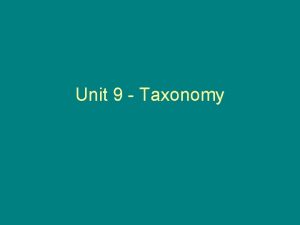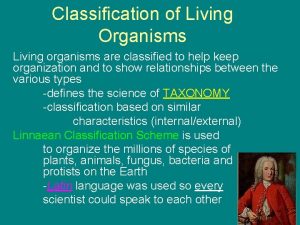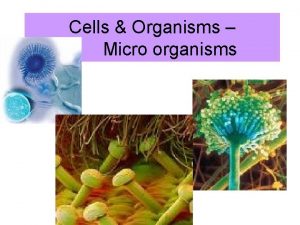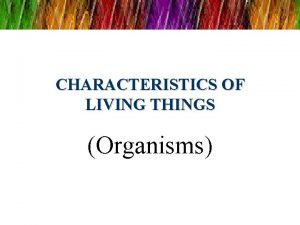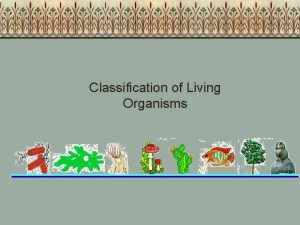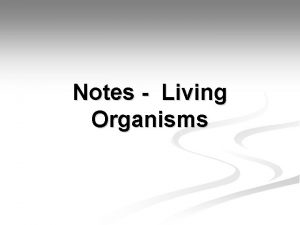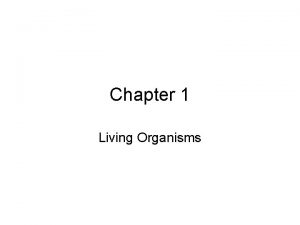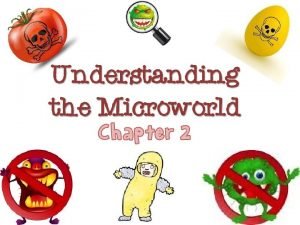Lesson 2 Scientific Tools Organisms Living Things Microorganisms




























- Slides: 28

Lesson 2 Scientific Tools

Organism(s) Living Things

Microorganism(s) Living thing too small to see with the unaided eye.

Compound Light Microscope Uses pairs of lenses to form a larger image. Ocular Lens Coarse Adjustment Knob Fine Adjustment Knob Arm Clips Body Tube Revolving Nosepiece Low Power Objective Lens High Power Objective Lens Stage Inclination Knob Diaphragm Base Mirror or Light

Electron Microscope Uses electrons instead of light to make extremely small objects visible. Can magnify up to 2 million times their actual size!

Ruler Measures length or distance. Meter – Longer lengths Centimeter – Shorter lengths Liter – Measure liquids Milliliter – Measure liquids

Thermometer Measures temperature.

Graduated Cylinders and Beakers Measure Volume.

Pan Balance Measures Mass or Density M D = Density is mass divided by volume or V

Spring Scale Measures Weight.

Stopwatch Measures Time.

Microscopes and Hand Lenses Magnify Small Objects

Telescopes and Binoculars Reveal details of faraway objects.

Calculators and Computers Organize Data and Make Graphs.

Line Graphs Visual display that uses 2 sets of data, like showing how a variable changes over time.

Bar Graph Display that shows data as bars of different length.

Circle Graph Display that shows data as parts of a whole.

Diagrams Picture or group of pictures that display data.

X – Axis – Horizontal or bottom edge of a graph. Y – Axis – Vertical or left edge of a graph.

A Sieve – Container with mesh or perforated bottom. Used to filter large particles out of a mixture.

Magnets – Attract metal objects

Petri Dish – Growing bacteria

Prediction A guess about what is likely to happen.

Discussion Question What tools would be useful for studying the planet Mars? Identify some of the things that can be learned by using different tools.

Quiz on Lesson 2 1. Which type of display is useful for showing parts of a whole? A. Line graph B. Bar graph C. Diagram + D. Circle graph 2. Which type of display is BEST for showing how many rainy days there were in each month of one year? A. Line graph + B. Bar graph C. Diagram D. Circle graph

Lesson 2 Quiz Continued 3. What is the dependent variable in this graph? B. Volume in L + A. Mass in g C. Volume in m. L D. The substance tested 4. Based on the data provided, what do you predict would be the mass of 50 m. L of this substance? A. 30 g B. 50 g + D. 500 g C. 400 g

Quiz on Lesson 2 Continued 5. Which of these tools should you use to measure the volume of a fluid? + A. Graduated cylinder B. Pan balance C. Computer D. Stopwatch 6. A hand lens can be useful for studying A. The growth of a tree. B. The behavior of a squirrel. +C. A bird’s feather. D. The density of a rock. 7. Suppose you want to compare the masses of 2 mineral samples. Which of these tools would you use? + A. Pan balance B. Hand lens C. Thermometer D. Graduated cylinder

Lesson 2 Quiz 8. You want to know whether adding sugar changes the temperature at which water freezes. Which of the following tools would NOT be useful for studying this? A. Pan Balance B. Thermometer C. Beaker + D. Microscope
 Venn diagram of living and non living things
Venn diagram of living and non living things The smallest living unit within the human body is
The smallest living unit within the human body is Sensitivity in life processes
Sensitivity in life processes Classifying living things lesson 1 answer key
Classifying living things lesson 1 answer key Lesson outline lesson 1: understanding science answer key
Lesson outline lesson 1: understanding science answer key Unit 2 lesson 2 scientific notation
Unit 2 lesson 2 scientific notation Lesson 2 measurement and scientific tools answer key
Lesson 2 measurement and scientific tools answer key Lesson 2 measurement and scientific tools answer key
Lesson 2 measurement and scientific tools answer key Competitive interaction
Competitive interaction What is multicellular and unicellular
What is multicellular and unicellular Kingdoms of living things
Kingdoms of living things Why do amebas need to obtain food
Why do amebas need to obtain food Different types of living organisms
Different types of living organisms Is protozoa prokaryotic or eukaryotic
Is protozoa prokaryotic or eukaryotic Living organisms in an ecosystem
Living organisms in an ecosystem Planaria, liverfluke, tapeworm, ascaris *
Planaria, liverfluke, tapeworm, ascaris * 5 levels of organisms
5 levels of organisms Two different organisms living together
Two different organisms living together What are the six classifications of living things on earth
What are the six classifications of living things on earth What is the smallest unit of living organisms
What is the smallest unit of living organisms Living organisms
Living organisms Remains, imprints or traces of once-living organisms
Remains, imprints or traces of once-living organisms What are the 3 domains?
What are the 3 domains? Evolution of living organisms
Evolution of living organisms Two different organisms living together
Two different organisms living together Parasitism
Parasitism Small living organisms
Small living organisms Unicellular living organisms
Unicellular living organisms Remains, imprints or traces of once-living organisms
Remains, imprints or traces of once-living organisms



